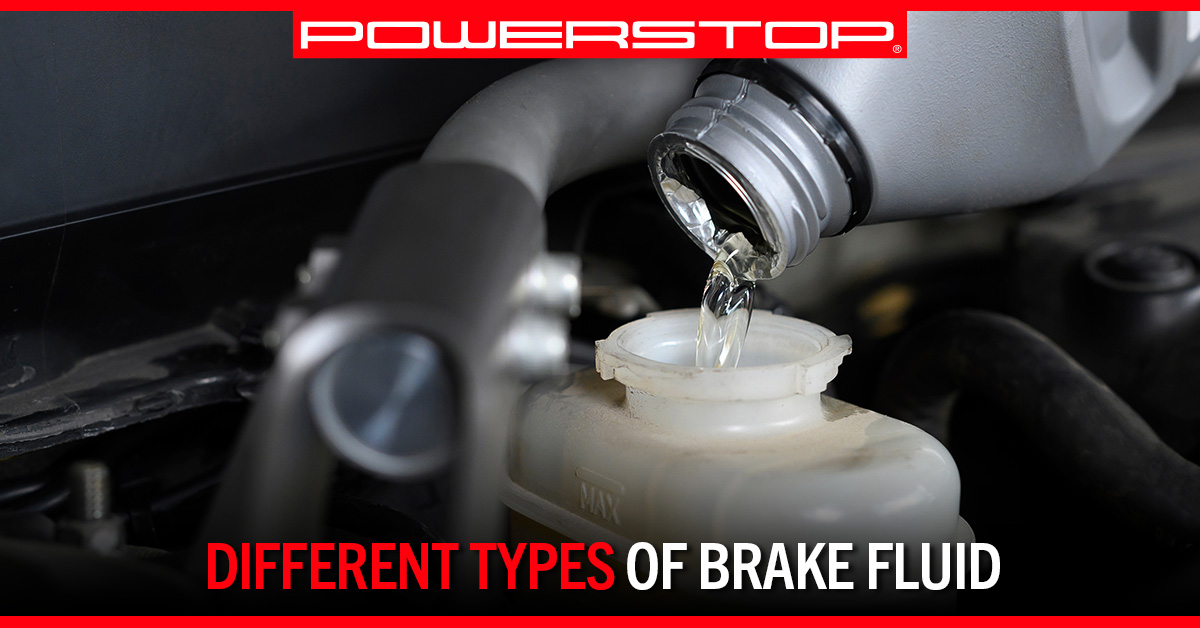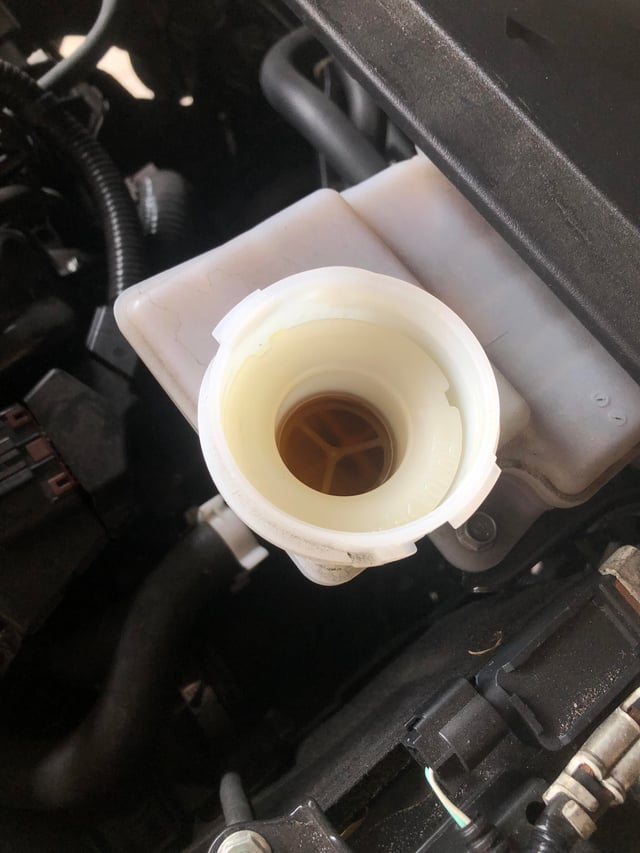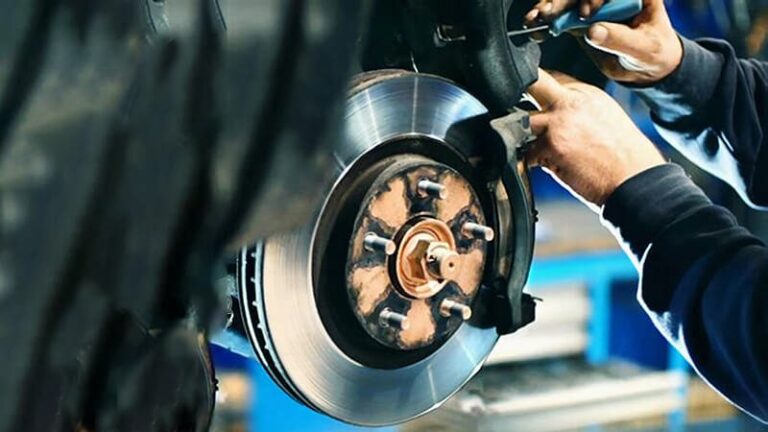Are you wondering if you can just grab any brake fluid for your car? It might seem like a simple choice, but using the wrong brake fluid can cause serious problems.
Your car’s braking system depends on the right fluid to work safely and smoothly. You’ll discover why not all brake fluids are the same, how to pick the right one, and what risks you face if you get it wrong.
Keep reading to protect your car—and yourself—on the road.

Credit: www.carsales.com.au
Types Of Brake Fluid
Brake fluid is essential for safe driving. It helps transfer force from the brake pedal to the brake parts. Not all brake fluids are the same. Different types serve different needs. Knowing the types can help you choose the right one.
Dot 3, Dot 4, And Dot 5 Explained
DOT 3 and DOT 4 are common brake fluids. Both are glycol-based and absorb moisture over time. DOT 4 has a higher boiling point than DOT 3. This makes it better for high-performance brakes.
DOT 5 is silicone-based. It does not absorb water. This prevents corrosion inside the brake system. DOT 5 is not compatible with DOT 3 or DOT 4 fluids. It is often used in classic or military vehicles.
Synthetic Vs. Mineral-based Fluids
Most brake fluids are synthetic. They use glycol or silicone as a base. Mineral-based fluids are less common. They come from natural oils. Mineral fluids often have lower boiling points. Synthetic fluids perform better under heat and pressure.
Compatibility With Brake Systems
Always check your car’s manual before choosing brake fluid. Using the wrong type can damage your brake system. DOT 3 and DOT 4 fluids mix easily. DOT 5 should never mix with glycol fluids. Some brake systems need specific fluids for best performance.

Credit: blog.clearcover.com
Why Brake Fluid Matters
Brake fluid plays a key role in your car’s braking system. It helps transfer the force from your foot on the brake pedal to the brake pads. This makes your car stop safely and quickly. Using the right brake fluid keeps the system working well and prevents damage.
Impact On Brake Performance
Brake fluid affects how well your brakes work. Good fluid moves easily through brake lines. This helps the brakes respond fast and smoothly. Old or wrong fluid can slow the brake response. That means longer stopping distances and less control.
Boiling Point And Safety
Brake fluid must handle high heat. When you brake hard, the fluid heats up a lot. If it boils, it creates gas bubbles. These bubbles make brakes feel soft or spongy. This can cause brake failure and danger. Correct brake fluid has a high boiling point to avoid this.
Effects Of Using Incorrect Fluid
Using the wrong brake fluid can harm your car. Different fluids have different chemical makeups. Mixing them can cause corrosion and leaks. This damages brake parts and leads to costly repairs. Wrong fluid also lowers braking power and safety.
Manufacturer Recommendations
Choosing the right brake fluid is vital for your car’s safety and performance. Manufacturers design brake systems with specific fluids in mind. Using the correct fluid helps keep your brakes working well and prevents damage.
Checking Your Owner’s Manual
The first step is to check your owner’s manual. It lists the exact type of brake fluid your car needs. This information is based on tests and safety standards. Using the recommended fluid keeps your brake system safe and efficient.
Owner’s manuals also explain how often to change the brake fluid. Brake fluid can absorb moisture over time, which reduces its effectiveness. Following the manual’s advice helps avoid brake problems and costly repairs.
Common Manufacturer Guidelines
Most car makers recommend specific types of brake fluid, like DOT 3, DOT 4, or DOT 5.1. These types differ in boiling points and chemical makeup. Using the wrong type can harm seals and cause brake failure.
Some manufacturers forbid using silicone-based DOT 5 fluid in cars designed for glycol-based fluids. Always stick to the fluid type marked in the manual. This keeps your brake system safe and reliable.

Credit: www.powerstop.com
Mixing Brake Fluids
Mixing brake fluids might seem easy, but it carries risks. Each type of brake fluid has a specific formula. These formulas affect how the fluid works in your car’s brake system. Understanding what happens when you mix fluids helps keep your brakes safe and effective.
Risks Of Mixing Different Types
Mixing brake fluids can cause chemical reactions. These reactions may reduce the fluid’s performance. It can also lead to corrosion inside brake parts. This damage weakens the brake system and may cause failure. Mixing also affects the fluid’s boiling point. A lower boiling point means less brake power under stress. Safety drops, and brake damage increases.
What Happens If You Mix Dot 3 And Dot 4
DOT 3 and DOT 4 fluids are similar but not the same. Both are glycol-based, so they can mix without immediate harm. The problem is that DOT 4 has a higher boiling point. Mixing lowers the overall boiling point. This reduces brake efficiency in hot conditions. Over time, the mix can absorb more moisture. Moisture lowers performance and causes corrosion. It is better to use the fluid recommended by your car’s maker.
Why Dot 5 Should Not Be Mixed
DOT 5 brake fluid is silicone-based. It does not mix with glycol-based fluids like DOT 3 or DOT 4. Mixing DOT 5 with other types causes fluid separation. This separation blocks brake lines and damages seals. It can lead to brake failure. DOT 5 also does not absorb moisture. This creates a risk of trapped water in the system. Use DOT 5 only if your car specifically requires it.
Signs Of Brake Fluid Issues
Brake fluid plays a key role in your car’s braking system. It helps transfer the force from your foot on the brake pedal to the brakes on your wheels. Signs of brake fluid issues often show up before serious problems occur. Knowing these signs can keep you safe and avoid costly repairs.
Brake Pedal Feel Changes
Your brake pedal should feel firm when pressed. A soft or spongy pedal can signal brake fluid problems. It may mean air or moisture has entered the brake lines. This reduces the fluid’s ability to work properly. You might notice the pedal goes down farther than usual. This change means the brakes may not respond well.
Warning Lights And Alerts
Most cars have a brake warning light on the dashboard. This light can come on if brake fluid is low or not working right. Some cars also show alerts about the brake system. Ignoring these warnings can lead to brake failure. Always check your brake fluid level if you see a warning light.
Fluid Color And Contamination
Brake fluid should be clear or light amber. Dark or dirty fluid shows contamination. Over time, water and dirt can get into the fluid. This lowers its boiling point and harms brake performance. Check the fluid in the reservoir regularly. If the fluid looks dark or cloudy, it needs to be changed soon.
Proper Brake Fluid Maintenance
Proper brake fluid maintenance is key to safe driving. Brake fluid helps transfer force from the brake pedal to the brake parts. Over time, brake fluid can absorb moisture, which lowers its performance. This can cause brake failure or damage to the braking system. Regular checks and changes keep the brake system working well.
When To Flush And Replace
Brake fluid should be flushed and replaced every 2 years or 24,000 miles. Check your car manual for exact times. If the brake pedal feels soft or spongy, it may be time to change the fluid. Dark or dirty fluid is also a sign to replace it. Flushing removes old fluid and moisture, ensuring better braking power.
Safe Handling And Storage Tips
Brake fluid is harmful if it touches your skin or eyes. Always wear gloves and avoid spills. Store brake fluid in a sealed container. Keep it away from heat and sunlight. Use only fresh, clean fluid from a sealed bottle. Never mix different types of brake fluid. Proper care keeps the fluid effective and safe.
Choosing The Right Brake Fluid
Choosing the right brake fluid is important for your car’s safety. Brake fluid helps transfer force from the brake pedal to the brakes themselves. Using the wrong type can cause brake failure or damage. Understanding what to consider can save you trouble and money.
Factors To Consider
Check your car’s manual for the recommended brake fluid type. Different cars need different fluids, like DOT 3, DOT 4, or DOT 5.1. These types vary in boiling points and chemical makeup. Using the wrong one can cause poor brake performance or damage. Also, consider the climate. Some fluids work better in hot or cold weather. Never mix different types unless the manual allows it.
Trusted Brands And Quality Indicators
Choose brake fluid from well-known brands. Trusted brands follow strict quality rules. Look for fluid that meets standards like SAE J1703 or FMVSS 116. These labels show the fluid passed safety tests. Avoid cheap, unmarked products. Low-quality fluid can absorb water and lose effectiveness. Always buy new fluid from a sealed container to keep it clean.
Frequently Asked Questions
Can I Use Any Brake Fluid For My Car?
No, not all brake fluids are compatible with every car. Always check your vehicle’s manual for the recommended type. Using the wrong fluid can damage the braking system and reduce safety.
What Types Of Brake Fluid Are Common?
The common types are DOT 3, DOT 4, DOT 5, and DOT 5. 1. Each has different boiling points and chemical compositions suited for specific vehicles and conditions.
How Often Should Brake Fluid Be Changed?
Brake fluid should typically be changed every 2 years or 30,000 miles. Old fluid absorbs moisture, which lowers braking performance and can cause corrosion.
Can Mixing Different Brake Fluids Harm My Car?
Mixing different brake fluids can harm your braking system. Some fluids are glycol-based, others silicone-based, and mixing them can cause seal damage and brake failure.
Conclusion
Choosing the right brake fluid matters a lot for your car’s safety. Different cars need specific types of brake fluid. Using the wrong one can cause damage or poor braking. Always check your car’s manual for the correct fluid. Never mix different fluids without knowing their compatibility.
Taking these steps helps your brakes work well and last longer. Safe driving starts with proper car care. Simple choices keep you and others safe on the road.



